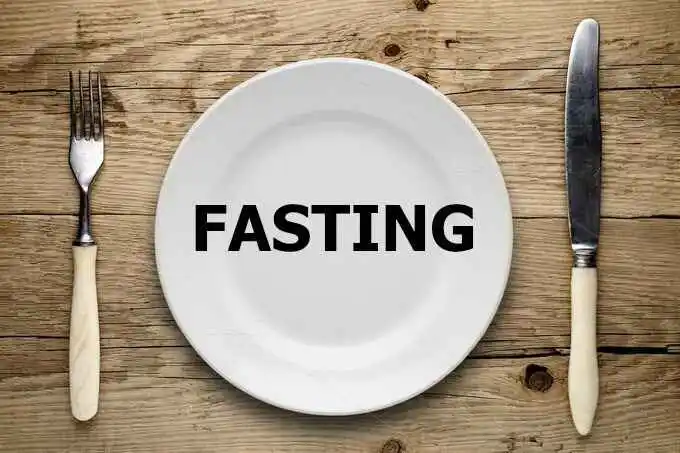Imagine a diet that doesn’t just change what you eat, but when you eat. ️ Fasting diets promise to unlock your body’s natural healing processes, boost metabolism, and even promote longevity. But with so much buzz around this topic, it’s easy to feel overwhelmed. How does fasting really work? Is it safe? Can it fit into your lifestyle?
In this comprehensive guide, we’ll dive deep into the world of fasting diets. From understanding the basics to exploring popular approaches like intermittent fasting, we’ll equip you with the knowledge to decide if this could be the breakthrough you’ve been searching for. Get ready to discover how fasting affects your body, learn practical implementation tips, and uncover strategies to maximize your results while overcoming common challenges. Let’s embark on this journey to unlock the potential of fasting diets together!
Understanding Fasting Diets
Types of Fasting Diets
Fasting diets come in various forms, each with its own unique approach to restricting food intake. Here are some of the most popular types:
Intermittent Fasting (IF)
Time-Restricted Feeding (TRF)
Alternate-Day Fasting (ADF)
Extended Fasting
5:2 Diet
| Fasting Type | Description | Duration |
|---|---|---|
| Intermittent Fasting | Cycles of eating and fasting periods | Varies (e.g., 16/8 method) |
| Time-Restricted Feeding | Daily eating window | 8-12 hours of eating |
| Alternate-Day Fasting | Alternating between fasting and normal eating days | 24-hour fasts |
| Extended Fasting | Prolonged periods without food | 24-72 hours or more |
| 5:2 Diet | 5 days of normal eating, 2 days of reduced calorie intake | 2 non-consecutive days per week |
Potential Risks and Contraindications
While fasting can offer health benefits, it’s not suitable for everyone. Some potential risks include:
Dehydration
Nutrient deficiencies
Headaches and irritability
Overeating during non-fasting periods
Fasting is not recommended for:
Pregnant or breastfeeding women
People with a history of eating disorders
Individuals with certain medical conditions (e.g., diabetes)
Children and adolescents
Health Benefits of Fasting
Fasting has been associated with numerous health benefits:
Weight loss and improved body composition
Enhanced insulin sensitivity
Increased autophagy (cellular repair)
Reduced inflammation
Improved heart health
Potential neuroprotective effects
Research suggests that fasting may also contribute to longevity and reduce the risk of chronic diseases. However, it’s essential to consult with a healthcare professional before starting any fasting regimen to ensure it’s safe and appropriate for your individual needs.
Now that we’ve covered the basics of fasting diets, let’s explore one of the most popular approaches: Intermittent Fasting.
Intermittent Fasting: A Popular Approach
Intermittent fasting has gained significant popularity as a flexible and effective approach to dieting. This method involves alternating periods of eating and fasting, with various schedules to suit different lifestyles. Let’s explore four common types of intermittent fasting:
A. Warrior Diet
The Warrior Diet involves fasting for 20 hours and eating within a 4-hour window. This approach mimics ancient warrior eating patterns, focusing on one large meal at night.
B. Eat-Stop-Eat
This method involves a 24-hour fast once or twice a week. During fasting days, no food is consumed, but calorie-free beverages are allowed.
C. 5:2 diet
The 5:2 diet allows normal eating for five days a week and restricts calorie intake to 500-600 calories on the other two non-consecutive days.
D. 16/8 method
One of the most popular approaches, the 16/8 method involves fasting for 16 hours and eating within an 8-hour window each day.
Here’s a comparison of these intermittent fasting methods:
| Method | Fasting Period | Eating Window | Frequency |
|---|---|---|---|
| Warrior Diet | 20 hours | 4 hours | Daily |
| Eat-Stop-Eat | 24 hours | N/A | 1-2 times/week |
| 5:2 diet | N/A | Restricted calories | 2 days/week |
| 16/8 method | 16 hours | 8 hours | Daily |
When choosing an intermittent fasting approach, consider:
Your lifestyle and schedule
Personal preferences
Health goals
Any existing medical conditions
Now that we’ve explored these popular intermittent fasting methods, let’s delve into how fasting affects your body and the potential benefits it can offer.
How Fasting Affects Your Body
Now that we’ve explored different fasting approaches, let’s delve into the fascinating ways fasting impacts your body. Understanding these effects can help you make informed decisions about incorporating fasting into your lifestyle.
A. Cellular repair processes
Fasting triggers a remarkable process called autophagy, where your body cleans out damaged cells and regenerates new ones. This cellular “spring cleaning” has been linked to numerous health benefits:
Reduced inflammation
Improved cellular function
Potential protection against age-related diseases
| Fasting Duration | Autophagy Level |
|---|---|
| 12-16 hours | Mild |
| 16-24 hours | Moderate |
| 24+ hours | Significant |
B. Hormonal impacts
Fasting induces significant changes in hormone levels, which can have wide-ranging effects on your body:
Increased Human Growth Hormone (HGH): Promotes fat burning and muscle gain
Improved insulin sensitivity: Helps regulate blood sugar levels
Reduced cortisol: May lower stress levels
C. Metabolic changes
During fasting, your body undergoes several metabolic shifts:
Enhanced fat burning: Your body switches from using glucose to burning stored fat for energy
Increased metabolic rate: Contrary to popular belief, short-term fasting can boost metabolism
Improved glucose regulation: Fasting can help stabilize blood sugar levels
These metabolic changes contribute to weight loss and improved overall health. As we move forward, we’ll explore how to implement a fasting diet effectively to harness these powerful bodily responses.
Implementing a Fasting Diet
Now that we understand how fasting affects your body, let’s explore how to implement a fasting diet effectively. This section will cover essential aspects of fasting, including what to eat, staying hydrated, preparation, and choosing the right method for you.
A. What to eat during eating windows
During your eating windows, it’s crucial to focus on nutrient-dense foods that support your health and fasting goals. Here’s a list of recommended foods:
Lean proteins (chicken, fish, tofu)
Whole grains (quinoa, brown rice, oats)
Fruits and vegetables
Healthy fats (avocado, nuts, olive oil)
Legumes (beans, lentils)
| Meal | Recommended Foods | Foods to Avoid |
|---|---|---|
| Breakfast | Eggs, Greek yogurt, berries | Sugary cereals, pastries |
| Lunch | Grilled chicken salad, quinoa | Fast food, processed snacks |
| Dinner | Baked salmon, roasted vegetables | Heavy, greasy meals |
B. Staying hydrated
Proper hydration is essential during both fasting and eating periods. Here are some tips:
Drink water regularly throughout the day
Aim for at least 8 glasses of water daily
Consider herbal teas or black coffee (without additives) during fasting periods
Monitor urine color as an indicator of hydration (pale yellow is ideal)
C. Preparing for your fast
Preparation is key to successful fasting. Follow these steps:
Gradually reduce meal frequency in the days leading up to your fast
Stock up on healthy foods for your eating windows
Plan your meals in advance to ensure balanced nutrition
Inform family and friends about your fasting schedule for support
D. Choosing the right fasting method
Selecting the appropriate fasting method is crucial for long-term success. Consider these popular options:
16/8 method: Fast for 16 hours, eat within an 8-hour window
5:2 diet: Eat normally for 5 days, restrict calories for 2 non-consecutive days
Eat-Stop-Eat: 24-hour fasts once or twice a week
Alternate-day fasting: Fast every other day
Choose a method that aligns with your lifestyle and goals. Start with a less restrictive approach and adjust as needed.
With these implementation strategies in mind, you’re now ready to begin your fasting journey. In the next section, we’ll explore how to maximize the results from your fasting diet.
Maximizing Results from Fasting
Breaking your fast safely
When ending a fasting period, it’s crucial to reintroduce food gradually to avoid digestive discomfort and maximize the benefits of your fast. Start with easily digestible foods like:
Bone broth
Fermented foods (e.g., yogurt, kefir)
Cooked vegetables
Lean proteins
Avoid large, heavy meals immediately after fasting, as they can lead to bloating and nausea.
Nutrient timing strategies
Optimizing nutrient intake during your eating window can enhance the benefits of fasting. Consider the following strategies:
Prioritize protein intake to support muscle maintenance and recovery
Consume complex carbohydrates for sustained energy
Include healthy fats for hormone regulation and satiety
| Nutrient | Timing | Benefits |
|---|---|---|
| Protein | Within 1-2 hours of breaking fast | Muscle preservation, satiety |
| Carbohydrates | Post-workout or earlier in the eating window | Energy replenishment, glycogen storage |
| Fats | Throughout the eating window | Hormone balance, prolonged satiety |
Combining fasting with exercise
Pairing fasting with exercise can amplify fat loss and improve metabolic health. Here are some tips for combining the two:
Perform low-intensity activities during fasting periods to preserve muscle mass
Schedule high-intensity workouts close to your eating window for optimal performance
Stay hydrated and listen to your body to avoid overexertion
By implementing these strategies, you can enhance the effectiveness of your fasting diet and achieve better results. Remember to consult with a healthcare professional before making significant changes to your diet or exercise routine, especially when incorporating fasting.
Common Challenges and How to Overcome Them
While fasting diets can be effective for weight loss and health improvement, they come with their own set of challenges. Here’s how to tackle some of the most common hurdles:
A. Avoiding overeating during eating periods
One of the biggest pitfalls of fasting diets is the temptation to overeat during non-fasting periods. To avoid this:
Plan balanced meals in advance
Practice mindful eating
Use smaller plates to control portion sizes
Include fiber-rich foods to promote satiety
B. Maintaining energy levels
Fasting can sometimes lead to energy dips. Here’s how to keep your energy up:
Stay hydrated
Focus on nutrient-dense foods during eating periods
Get adequate sleep
Engage in light exercise during fasting periods
C. Managing social situations
Social events can be challenging when you’re on a fasting diet. Try these strategies:
Communicate your fasting schedule to friends and family
Suggest activities that don’t revolve around food
Adjust your fasting window to accommodate important social events
D. Dealing with hunger pangs
Hunger can be intense, especially when starting a fasting diet. Here are some ways to manage it:
Drink water or herbal tea
Stay busy with activities
Practice meditation or deep breathing exercises
Gradually increase fasting duration to allow your body to adapt
| Challenge | Solution |
|---|---|
| Overeating | Plan meals, practice mindful eating |
| Low energy | Stay hydrated, focus on nutrient-dense foods |
| Social situations | Communicate, suggest non-food activities |
| Hunger pangs | Stay hydrated, keep busy, practice meditation |
By anticipating these challenges and implementing these strategies, you can increase your chances of success with your fasting diet. Remember, it’s normal to face obstacles when adopting a new eating pattern. With persistence and the right approach, you can overcome these hurdles and reap the benefits of fasting.
Long-term Sustainability of Fasting Diets
Potential for weight maintenance
Fasting diets have shown promising results for long-term weight maintenance. After achieving initial weight loss, many individuals find that incorporating intermittent fasting into their lifestyle helps them maintain their new weight. This is primarily due to the metabolic adaptations that occur during fasting periods, which can lead to improved insulin sensitivity and fat oxidation.
Monitoring progress and adjusting as needed
To ensure the long-term sustainability of a fasting diet, it’s crucial to regularly monitor your progress and make adjustments as necessary. Here are some key factors to consider:
Weight fluctuations
Energy levels
Physical performance
Overall well-being
| Monitoring Method | Frequency | Benefits |
|---|---|---|
| Weigh-ins | Weekly | Track weight trends |
| Body measurements | Monthly | Assess body composition changes |
| Progress photos | Monthly | Visualize physical changes |
| Food and mood journal | Daily | Identify patterns and triggers |
Adapting fasting to your lifestyle
One of the main advantages of fasting diets is their flexibility. To maintain a fasting diet long-term, it’s essential to adapt it to your lifestyle. Consider the following strategies:
Experiment with different fasting windows to find what works best for you
Adjust your fasting schedule to accommodate social events or work commitments
Incorporate “fasting-friendly” activities during fasting periods, such as light exercise or meditation
Be prepared with healthy, satisfying meals for your eating windows
By focusing on these aspects of long-term sustainability, you can successfully integrate fasting into your lifestyle and continue to reap its benefits. As you progress, you may find that your body becomes more efficient at utilizing stored energy during fasting periods, making the practice easier to maintain over time.
Fasting diets offer a unique approach to weight management and overall health improvement. From intermittent fasting to longer-term protocols, these diets can positively impact your body’s metabolism, cellular repair processes, and even cognitive function. By understanding how fasting affects your body and implementing a suitable plan, you can maximize the benefits while overcoming common challenges.
Remember, the key to success with any fasting diet is sustainability. Start slowly, listen to your body, and adjust your approach as needed. Whether you’re looking to lose weight, improve your health, or simply reset your eating habits, a well-planned fasting diet could be the tool you need to achieve your wellness goals. Always consult with a healthcare professional before starting any new diet regimen, especially if you have pre-existing health conditions.








